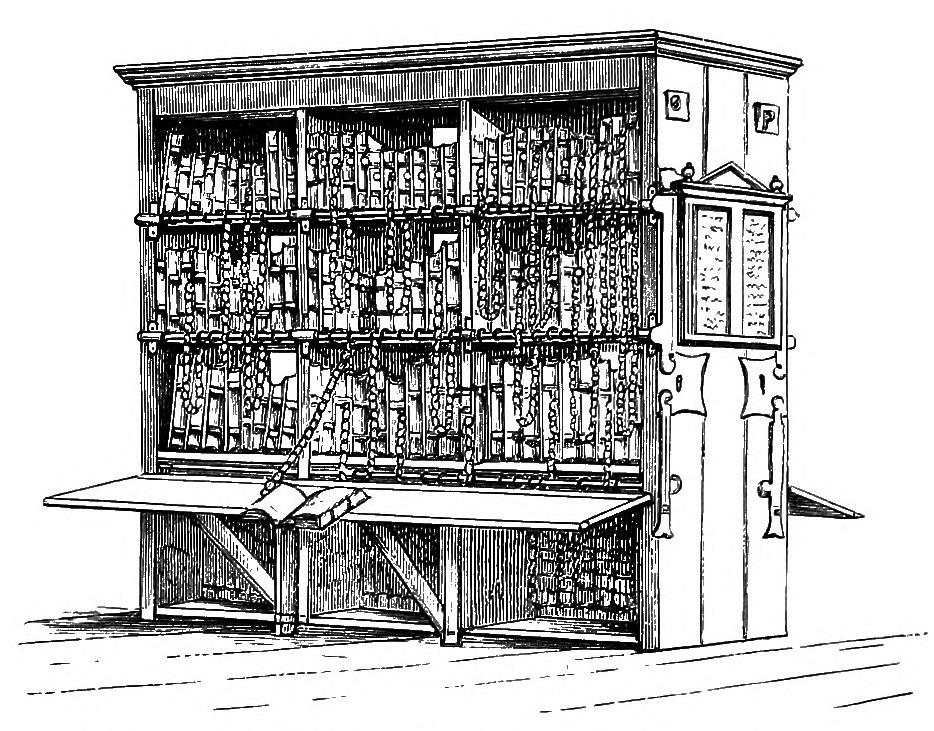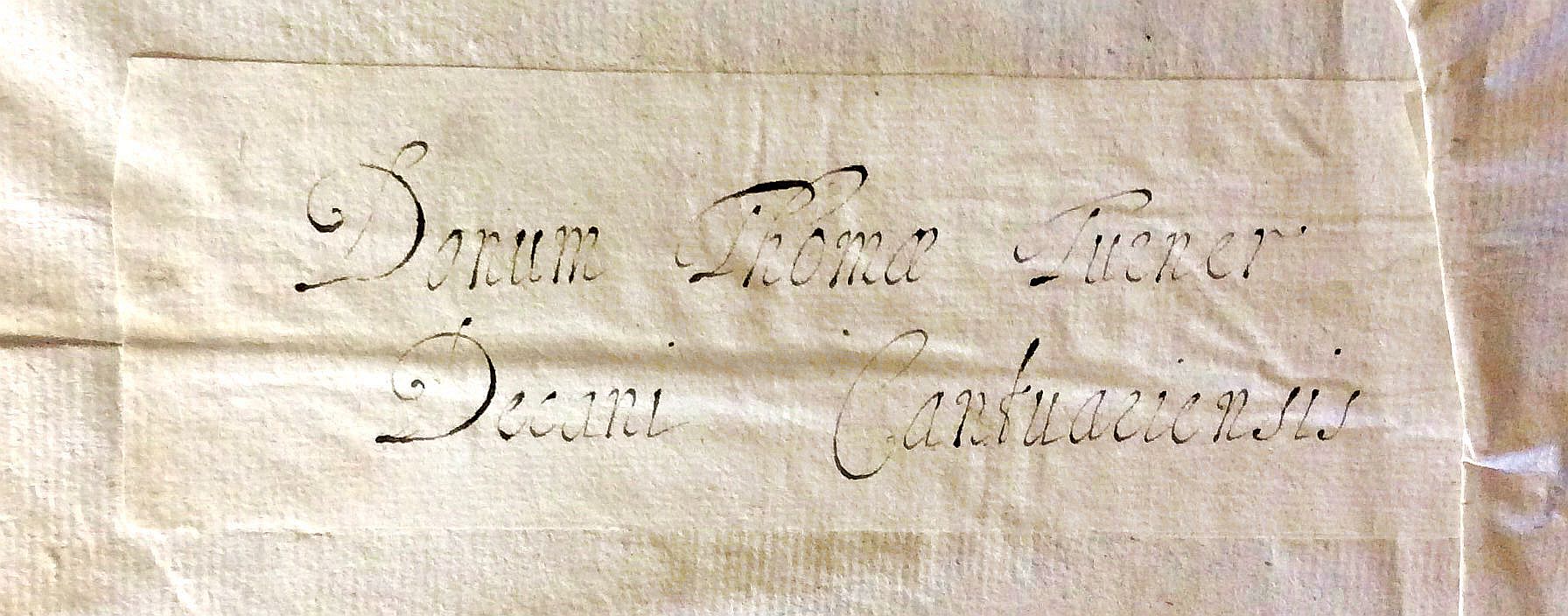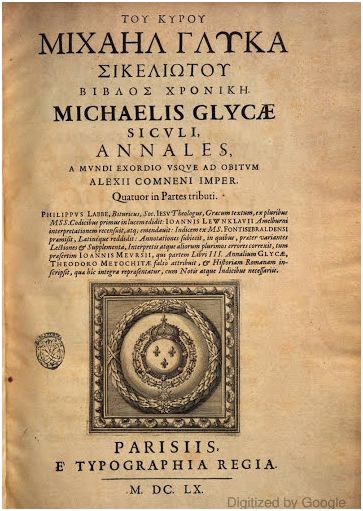Did Canterbury Cathedral Library chain its books in the seventeenth century?

(D. Stoker)
The Treasurer’s Book for 1676/1677 (CCA DCc/TB-13) has several records of payments relating to the Chapter Library which had been newly built ten or twelve years earlier. The half-yearly stipend for Arthur Kay the Library Keeper is recorded as £2–10–0 and that of his deputy John Sargenson as £1–0–0 (p. 61). Under the heading Expensae necessariae incertae (Necessary miscellaneous expenses, p. 77), Dr Peter Du Moulin, the Treasurer for that year, records for 19 January 1677 the payment of five shillings ‘For halfe yeares wages to ye woman that cleanseth ye Library’ together with a further two shillings ‘For mops & brooms &c for the Library’. There then follows a similar small payment of two shillings ‘For taking off the chains from the books’.
 A chained library (Wiki Commons)
A chained library (Wiki Commons)This immediately raises the expectation that the books in the Library must have been chained until 1677. This would have been a little unusual in a new library building at that date. If the books had been chained, it might be expected that books surviving from before that period would have traces of the attachment of chain staples and that the surviving seventeenth-century bookcases would show marks where a rail had been fixed for the attachment of chains. No such marks can be seen on the book cases, and none of the books which are listed in inventories of the 1630s and 1640s have any traces of chain-staple holes. Why then did the Chapter approve a payment for chains to be removed?
This remained a puzzle for many years. As a result of a book-by-book examination of the early collections for provenance evidence, a few candidate volumes with marks left by chain staples were found but these were not in the Library in 1677 and must have had chains in other libraries at some point before the books came to Canterbury. Why was it necessary to pay two shillings to get chains removed? The sum of money is very small, suggesting that that number of chains to be removed was also small.

Eventually, one group of books was discovered which had pairs of holes on the upper fore-edge of the front boards where chain staples would have been attached. This was a series of twenty volumes of the Historia Byzantina, printed in Paris between 1645 and 1663 (shelf mark CCL W/D-7-1/20). The books are bound in 17th-century calf with a double fillet rule parallel to the spine though most have been rebacked at a later date. The first volume has a fore-edge title, suggesting that the volumes were once shelved with the spines inwards. These seem likely to be the volumes from which the chains were removed by order of the Chapter in 1677. But why were they chained?

A provenance inscription on a paper label pasted on the verso of the front free endpaper reads Donum Thomæ Turner Decani Cantuariensis’ (the gift of Thomas Turner Dean of Canterbury). Thomas Turner, D.D. (1591–1672) was Dean of Canterbury from 1644 to his death in 1672. He was educated at Reading Grammar School and St John’s College, Oxford (1610; B.A. 1614; M.A. 1618; B.D. 1624), where his tutor was the future Archbishop William Juxon and the future Archbishop William Laud was President (1611–1621). He taught at Oxford from 1617 to 1629 and was the college library keeper in 1621. Because of the political situation in 1644 he was unable to take up his post at Canterbury until the Restoration in 1660.
 Thomas Turner’s donation inscription (Dean and Chapter of Canterbury)
Thomas Turner’s donation inscription (Dean and Chapter of Canterbury)After at last taking up his deanship in Canterbury in 1660, Turner superintended considerable restoration work at the Cathedral, including the rebuilding of the Library. An entry in the Benefactors’ Book (CCL Lit. MS. E40, f. 109r) records his gift of books to the Library:
Thomas Turner sacræ Theologiæ Professor, hujus Eccl[es]iæ Decanus, dedit Historiam Byzantinam, octodecim voluminibus contentam, in fol. Edit. Paris.
[In a later hand:]
Perkins’s Works. 3 vol: fol
 Michael Glycas, Annales, Paris, 1660 (Google books)
Michael Glycas, Annales, Paris, 1660 (Google books)It seems likely that Dean Thomas Turner acquired the twenty volumes of the Historia Byzantina in about 1664 in order to give them to the newly re-opened library at the Cathedral. As they are recently published works, it seems unlikely that he bought them from an institutional library which chained its books. Turner must have decided that his newly acquired gifts should be chained, perhaps to indicate the importance of the gift, or perhaps to show that the new library was keeping up the standards of ancient libraries where the frequently used books were chained to desks to ensure that they would always be available for consultation. His previous experience in the library at St John’s College, Oxford, may have played a role in this. A further connection with St John’s Oxford is his patron Archbishop William Juxon who provided the funds to build the new library at the Cathedral.
Turner died in 1672. Just four or five years later, his memory had clearly declined and his former colleagues decided to have these old-fashioned chains removed.
Further information about Thomas Turner’s gifts to the Cathedral Library can be found at https://cclprovenance.djshaw.co.uk/index.php?title=Thomas_Turner.
Elizabeth Allen, ‘Turner, Thomas (bap. 1592, d. 1672)’, Oxford Dictionary of National Biography, Oxford University Press, 2004; online edn, Oct 2007 [http://www.oxforddnb.com/view/article/27868, accessed 13 Dec 2012]